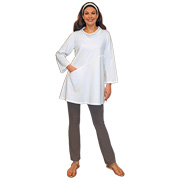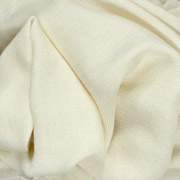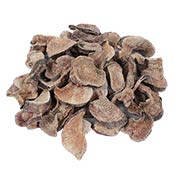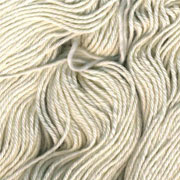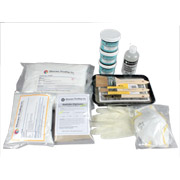...Transfer Paper's come a long way, baby! That's why folks often choose transfer paper over any other way to get an image on fabric, even screen-printing. Well simply put, it's simpler, much simpler. No messy inks no photo emulsion no screen no exposure time issues, no steep learning curve. Basically it's just, print on the inkjet transfer paper, trim and iron it on your shirt and voila you're done.
Permatrans Inkjet Transfer Papers
Opaque Inkjet Transfer Paper (for dark colored fabric)
The technology for transfer papers has improved greatly over the years. They no longer have the stiff shiny look from way back in the 70's and 80's. Remember the ones that used to crack, peel, and fade away after just the first washing? The latest generation of papers has little or no feel on the fabric. Some even have a bit of stretch, and have virtually no cracking or significant fading with repeated washings. Grandma wouldn't recognize it!
Here's a bit of history:
In the mid 60's there was transfer paper that featured a "cold peel" process. Most retail stores displayed racks of pre-printed transfers that you could take home and apply with your household iron. The correct technology was not in place at this time, therefore the chances of the transfer actually sticking to the garment were not good. We also didn't have the printers we have now for home use, so you couldn't make your own transfers.
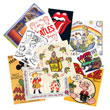
The original "cold peel" transfer paper had its drawbacks. Due to the fact that this paper was in its infancy stage the papers did not hold up to multiple washings. Also, the cold peel transfers were thick and had a rubbery feel, making them uncomfortable to wear. Though these transfers had multiple problems, people did not seem to mind because this was a way to make a statement, to find humor in clothing, etc.
T-Shirt Shops started to open once people realized the importance of imprinted garments. Not only did people want to wear clothing with novelty sayings on them, they also wanted inexpensive souvenir's that would display where they were on vacation, etc. Another reason heat transfer t-shirts became popular was due to the advertisement value that they contained. Companies began to give away shirts that displayed their company image or saying. These t-shirts became known as "Promo Tees".
Transfer papers continued to gain popularity, but were still somewhat uncomfortable to wear so changes were necessary. In order to compete with screen-printed shirts something had to be done to the existing transfer paper. The heat transfer paper industry became reborn with the emergence of the hot split transfers. No longer was transfer paper just for novelty, it has become a fashion. Transfer paper manufacturers continue to improve the transfer papers that are on the market today. Important features (permanence, washability, vibrancy, etc.) of the paper will continue to improve over time.
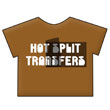
Early transfer paper was only intended for light garments, so the need for a transfer paper that worked on dark garments was evident. Opaque Transfer Paper first emerged as a way to transfer onto dark garments. It's a paper developed with a white backing material to allow for proper coverage of a dark or colored shirt. Though this was a great advancement, the opaque papers do have their limitations as well and they must be trimmed completely. As the paper has a white backing any area left unprinted will appear white on the fabric. Also they are quite a bit stiffer than the paper used on white shirts due to the thickness of the white backing paper necessary to cover over the dark garment. But gone are the ones that just shredded after the first wash, or bled all over the place in the rain. The ones we have now, if used with proper heat and pressure (heat presses work best), are light years better.
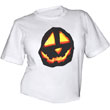
You will now find heat transfer shirts not only in souvenir shops, but also in boutiques & high-end clothing shops. These imprinted shirts now appeal to the masses. People are able to express personal beliefs or concerns of the times. The can display their favorite sports team or music icon. As Transfer Paper has evolved, so has the application, which has made the importance of the Heat Press even more apparent as the technology had developed toward higher heat and more pressure to get a really professional result. But best of all, with the price of technology coming down, you can get very reasonable printers and heat presses for home use, and turn out a professional quality product yourself.
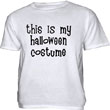
How do you do it?
It's a pretty simple process. If any fiber art technique gets the no brainer seal of approval it's this stuff. It's great for the artist who's not necessarily an artist as there are lots of free images on the web to borrow, and needless to say you can certainly use family photos and anything you can scan to use as your image. If you're not into painting with a brush or doing anything really complicated/messy and still want to get your Å“fiber art on this is your product. It's also the product of choice for digital artists who want to use another means to get their art to fabric. Design using your art program or device of choice then print and you've got your art ready for public consumption. Ready to hang in the Whitney or on your cutting edge new t-shirt design.
Since it is so simple to use it's really a godsend for many levels of artists. Anyone from a grandma to a budding Warhol can use this stuff with great success.
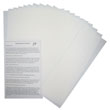
All you do is print the design you've chosen from your computer, and then you print directly on to the paper using your inkjet printer. Finally you iron the paper onto your fabric using a home iron or heat press for really professional results. It can be used for a variety of items, for tote bags, t-shirts, aprons, etc., or pretty much any fabric that you want to use for your art. Basically it comes in 2 varieties... For light colored fabric (Permatrans inkjet papers), or dark colored fabric (Opaque inkjet paper). The light colored fabric variety cannot be used on dark fabrics because the paper's polymer is essentially transparent. An inkjet printer is not capable of printing white. So, anywhere that the image would have white, you will see straight through to the color of the garment. Inkjet transfer paper for dark colored garments is NOT transparent. It is white. So unlike the process with transfer paper for light fabric, you do not print the image mirrored. You print it just the way it is, right on the paper with the white background. Now your image will be white where it is supposed to be. The washability for inkjet transfer paper is not as good as a screen-printed shirt, but if you follow the washing instructions included with the paper, they will usually last plenty of washes.
How does it work?
In a nutshell the polymerized coating of the paper is sealing the inkjet ink into the surface of the fabric.
Transfer Paper has always required 3 constant factors in order to work properly: Proper Time, Heat & Pressure. This is the key. Lots of heat, the correct amount of time and lots of pressure = a wicked cool t-shirt.
In most standard inkjet printers there are one of two types of ink. Acid based or pigment based. Both varieties work well enough and one is not preferred over another.
However, some pigment-based inks can shift or discolor slightly with the high heat needed when applying the transfer. Very occasionally you'll see a slight yellowish/greenish hue after pressing.
Which printers work best? Honestly we've not found any one brand that works better than any other. All brands work well which is why this is such a cool item to have in your fiber art arsenal. I mean who doesn't have an inkjet printer and the desire to make a cool shirt pretty much instantly?




